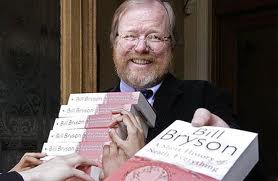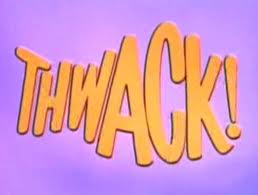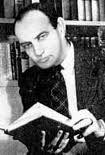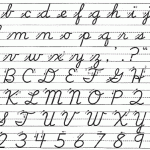A Web Manual on Technical Writing
Posted on November 27, 2012
Filed Under Communication, Technology, The Writing Life | Leave a Comment
Here’s an online e-book that could support a college-level course on technical writing – in the form of Content Strategy 101, the book’s title. Its authors are Sarah O’Keefe and Alan S. Pringle. Sarah is the founder and Alan the director of publishing operations at Scriptorium Publishing, “a content strategy consultancy that specializes in technical content.”
 It’s an act of generosity, as well as enlightened self-interest, to place an entire manual on technical writing on the web, linked section by section and chapter by chapter. There are also EPUB, print and Kindle versions, these for sale – where the self-interest comes in most evidently.
It’s an act of generosity, as well as enlightened self-interest, to place an entire manual on technical writing on the web, linked section by section and chapter by chapter. There are also EPUB, print and Kindle versions, these for sale – where the self-interest comes in most evidently.
In the book’s foreward, Ann Rockley leads off by talking about “content strategy.” “All too often,” she notes, “content strategy is applied only to the most visible information: marketing collateral and web sites. Useful as they are, these are not the only types of content that can benefit from a rigorous application of content strategy. The information created by technical communicators—documentation—is just as important, but for a long time has received short shrift when compared to its more high-profile brethren.”
Somebody’s paying book-length heed to documentation as an engaging writing discipline. All right!
Read more
Fewer Hyphens and More Woes?
Posted on November 17, 2012
Filed Under Communication, Technology, The Writing Life | Leave a Comment
We’re going to get a little technical on this technical writing blog, but at the end of the post you’ll see that there’s a big reward for staying with us.
Subject: The hyphen.
Kimberlee Kile discussses the hyphen’s functioning by noting, first off, what a hyphen is not – it’s not a dash, like the one we just used here. A hyphen is a shorter dash, used for connecting words that belong together. A dash, a longer hyphen, you might say, is used for setting off related elements in a sentence – that is, allowing one to call attention to the other. A hyphen brings two related words together, and a dash emphasizes a longer relationship. But wait, that’s us, not Kimberlee, talking.
 “A hyphen,” Kimberlee says, “mainly functions to connect compound adjectives and nouns.” Well sure, those are the sort of words that belong together. But did you know that hyphenated words are “being phased out of our language,” especially on the Internet? And that relentless hyphen-hunting resulted in the elimination of about 16,000 hyphenated words from the Shorter Oxford English Dictionary (2007)? Now that’s hyphen-excision with a vengeance. (Maybe the editors were really trying to save paper?)
“A hyphen,” Kimberlee says, “mainly functions to connect compound adjectives and nouns.” Well sure, those are the sort of words that belong together. But did you know that hyphenated words are “being phased out of our language,” especially on the Internet? And that relentless hyphen-hunting resulted in the elimination of about 16,000 hyphenated words from the Shorter Oxford English Dictionary (2007)? Now that’s hyphen-excision with a vengeance. (Maybe the editors were really trying to save paper?)
Read more
Check Out This Internet Writing Workshop
Posted on October 23, 2012
Filed Under Communication, Technology, The Writing Life | Leave a Comment
I’ve just come across a great online writing workshop, Writing Commons, created by Joe Moxley, an English professor at the University of South Florida. The beauty of the Internet is that you never know in roaming it when you’re going to encounter a great new resource – Writing Commons is proof of that.
 The site has apparently been around for a year or so and now, as occurs with Internet utility, its use is steadily picking up – “from about 200 visitors daily to more than 1,000 daily visitors now.”
The site has apparently been around for a year or so and now, as occurs with Internet utility, its use is steadily picking up – “from about 200 visitors daily to more than 1,000 daily visitors now.”
Writing Commons wants to be “the open-education home for writers.” We presume that technical writers are as welcome there as any other practitioners. In fact, we just looked a little closer and found that, “Writing Commons wants to be considered an alternative to expensive textbooks used for college courses in composition, technical writing, creative writing and poetry.” So there, technical writing is included. Once you’ve roamed the site, there will no longer be any excuses for clumsy expression of any ilk.
Read more
Bill Bryson’s ‘Manual’ on Creation
Posted on September 14, 2012
Filed Under Communication, Technology, The Writing Life | Leave a Comment
We’ve always been pleased to have Bill Bryson’s 2003 book, A Short History of Nearly Everything, in our library, and now we intend to set about reading it cover-to-cover. That resolve comes after revisiting Bryson’s engaging treatment of “The Reverend Evans’s Universe” near the book’s start.
 You won’t find a more engaging introduction to the truly awesome death of supernovae far out, very fortunately, in the universe. Nor will you find many other places (including, however, the works of John McPhee) that offer such helpful clues to engaging technical writing. That’s right, technical writing can be at least somewhat engaging, without ceasing to be accurate, informative and helpful.
You won’t find a more engaging introduction to the truly awesome death of supernovae far out, very fortunately, in the universe. Nor will you find many other places (including, however, the works of John McPhee) that offer such helpful clues to engaging technical writing. That’s right, technical writing can be at least somewhat engaging, without ceasing to be accurate, informative and helpful.
Read more
Your Aim: Enlightenment, Not Punishment
Posted on August 28, 2012
Filed Under Communication, The Writing Life | Leave a Comment
We were browsing the web for ideas and came upon a post on the Accidental Remediation blog by Short Geologist. All we can discover about Short Geologist is that she’s a woman, but from her post anyway, a wise one.
 SG has “a mania for clear, concise technical writing.” How do you get to that exalted state – a producer of clear, concise technical writing? Remember one thing, SG advises: “This isn’t high school, where you’re trying to pad your 11th-hour essay to fit the word count. Nobody cares how big your words are – and if they’re too big, perhaps it’s time to abbreviate. Remember, you’re writing to communicate, not punish the reader!”
SG has “a mania for clear, concise technical writing.” How do you get to that exalted state – a producer of clear, concise technical writing? Remember one thing, SG advises: “This isn’t high school, where you’re trying to pad your 11th-hour essay to fit the word count. Nobody cares how big your words are – and if they’re too big, perhaps it’s time to abbreviate. Remember, you’re writing to communicate, not punish the reader!”
Read more
Automate Your Writing? Not Really, but Here’s a Useful Indicator
Posted on August 16, 2012
Filed Under Communication, Technology, The Writing Life | Leave a Comment
Here’s a throwback to awareness in the present that technical writers – indeed, anyone who writes seriously – might appreciate. Wiley Brooks on the Business2Community site reminds us of Rudolf Flesch’s algorithm-based readable writing tool. Drop in a body of text, press the button and get your score for clear writing. Wow!
 Flesch, Brooks notes, was a lawyer and refugee from Nazi Germany who “earned a Ph.D. in English at Columbia University, and then became a prominent professor there.” He’s pictured here.
Flesch, Brooks notes, was a lawyer and refugee from Nazi Germany who “earned a Ph.D. in English at Columbia University, and then became a prominent professor there.” He’s pictured here.
Read more
A Writing Blogger Who Has It Right
Posted on July 13, 2012
Filed Under Communication, Technology, The Writing Life, Uncategorized | Leave a Comment
Friday the 13th has turned out to be my lucky day, in a tradesman’s sense, at least. I’ve just come upon John Graham-Cumming’s blog on technical writing and it’s great to have discovered a kindred spirit who reaffirms what little I thought I knew about writing. To the fullest.
 Graham-Cumming is a British computer programmer and writer. His pointers are right on the mark: Practice, Read, Listen to Editors, Think about writing, Think about the reader, Plan and Dream. That’s it, and it’s plenty.
Graham-Cumming is a British computer programmer and writer. His pointers are right on the mark: Practice, Read, Listen to Editors, Think about writing, Think about the reader, Plan and Dream. That’s it, and it’s plenty.
Writing is a discipline, but a hazy one. There are explicit things to do, yet inspiration comes first, and that’s where the dreaming comes in. Technical writers have it over their more creative colleagues in this respect, because their material is relatively “dictated,” it’s permissible parameters are clearer. Yet writing well always involves reflection and rededication, whatever the subject assignment. Hence the dreaming factor.
Read more
Aatish Bhatia: A Young Chronicler of Science
Posted on July 10, 2012
Filed Under Communication, Technology, The Writing Life | Leave a Comment
Just as blogs are providing new outlets for journalism so, too, are they producing a new generation of science writers. We’ve come upon one of them, Aatish Bhatia, creator of the blog Empirical Zeal, and he’s someone to follow. It’s a gift to explain complex material clearly and colorfully, and Aatish has that gift. Here, he’s featured by Scientific American.
Even when he’s not writing about colors, as he is in his post “Crayola-fication of the World: How we gave colors names, and it messed with our brains,” he’s writing colorfully and clearly, as in “What it feels like for a sperm, or how to get around when you are really, really small.”
 Aatish says his gift for chronicling science comes from growing up in a home where his father is a journalist and his mother a writer. “To a large extent,” he adds, “my interest in science grew from reading popular science.” For how many others of us has that been true?
Aatish says his gift for chronicling science comes from growing up in a home where his father is a journalist and his mother a writer. “To a large extent,” he adds, “my interest in science grew from reading popular science.” For how many others of us has that been true?
His “gateway book” was Surely You’re Joking, Mr. Feynman. “It made my eighth-grade self realize that interesting people actually chose science as a career. That opened the door to a lot of other popular science authors. It became a bit of an obsession but to a large extent, these books guided my career interests.”
Read more
Communicating From a Kitchen Table
Posted on June 27, 2012
Filed Under Business, Technology, The Writing Life | Leave a Comment
It’s amazing how resourceful people can be in this ready-access virtual world with all the Internet-related tools at our disposal. Claire Broadley, of Leeds, England, explains on The Huffington Post how she runs her technical writing/web development business, Red Robot Media, virtually from her kitchen table.
 Claire recommends using the cloud as a virtual office and storage space. That certainly frees up kitchen space for tasks having more directly to do with survival. Then Claire uses Teamwork web-based project management software.
Claire recommends using the cloud as a virtual office and storage space. That certainly frees up kitchen space for tasks having more directly to do with survival. Then Claire uses Teamwork web-based project management software.
At Encore, we typically use clients’ office space, so kitchen countertops aren’t an issue for us. But, we have to cheer on a competitor who makes such resourceful use of the space available to her. We’re living in a keyboard-prompted world, and the keyboards – battery-powered or not, portable or not – are becoming so readily available that they’re leading to debates, as in our last post, about whether we even need to learn handwriting anymore. (We think we do.)
Read more
Cursive Writing on the Brink of Extinction?
Posted on June 25, 2012
Filed Under Communication, Technology, The Writing Life | Leave a Comment
This post isn’t about technical writing. It’s about writing plain and simple – handwriting, indeed, cursive writing. Cursive writing is under attack in our digital age, this coverage from South Carolina being the latest example we’ve seen.
 Since, the argument goes, practically everything is typed, emailed or texted these days, what’s the point of having kids tediously learn handwriting? Well, what about those moments when a keyboard – full-, iPad-, or pocket-sized – may simply not be at hand, or when your signature is required, or when you may want to make a more personal impression?
Since, the argument goes, practically everything is typed, emailed or texted these days, what’s the point of having kids tediously learn handwriting? Well, what about those moments when a keyboard – full-, iPad-, or pocket-sized – may simply not be at hand, or when your signature is required, or when you may want to make a more personal impression?
Recently
- Presentations With Forethought
- Technical Writing’s Lineage – Surely It’s Deeper than Digital
- At the Holidays, Twitting Amazon
- Successful Cookie Baking – From Mom, an Acknowledged Expert
- Slides for a Tech Writer’s Craft
- Digital or Not, Be Clear
- Being Watchful About Digital Designs…
- When Proposals Don’t Click, Keep Making Them Anyway
- Like a Good Gardener, Help an Enterprise Keep Itself Current
- We’re Leaders All, And Need to Think That Way
Categories
Archives
- January 2017
- December 2016
- November 2016
- October 2016
- September 2016
- August 2016
- July 2016
- June 2016
- May 2016
- April 2016
- March 2016
- February 2016
- January 2016
- December 2015
- November 2015
- October 2015
- September 2015
- August 2015
- July 2015
- June 2015
- May 2015
- April 2015
- March 2015
- February 2015
- January 2015
- December 2014
- November 2014
- October 2014
- March 2014
- February 2014
- January 2014
- December 2013
- November 2013
- October 2013
- September 2013
- August 2013
- July 2013
- June 2013
- May 2013
- April 2013
- March 2013
- February 2013
- January 2013
- December 2012
- November 2012
- October 2012
- September 2012
- August 2012
- July 2012
- June 2012
- May 2012
- April 2012
- March 2012
- February 2012
- January 2012
- December 2011
- November 2011
- October 2011
- September 2011
- August 2011
- July 2011
- June 2011
- May 2011
- April 2011
- March 2011
- February 2011
- January 2011
- December 2010
- November 2010
- October 2010
- September 2010
- August 2010
- July 2010
- June 2010
- May 2010
- April 2010
- March 2010
- February 2010
- January 2010